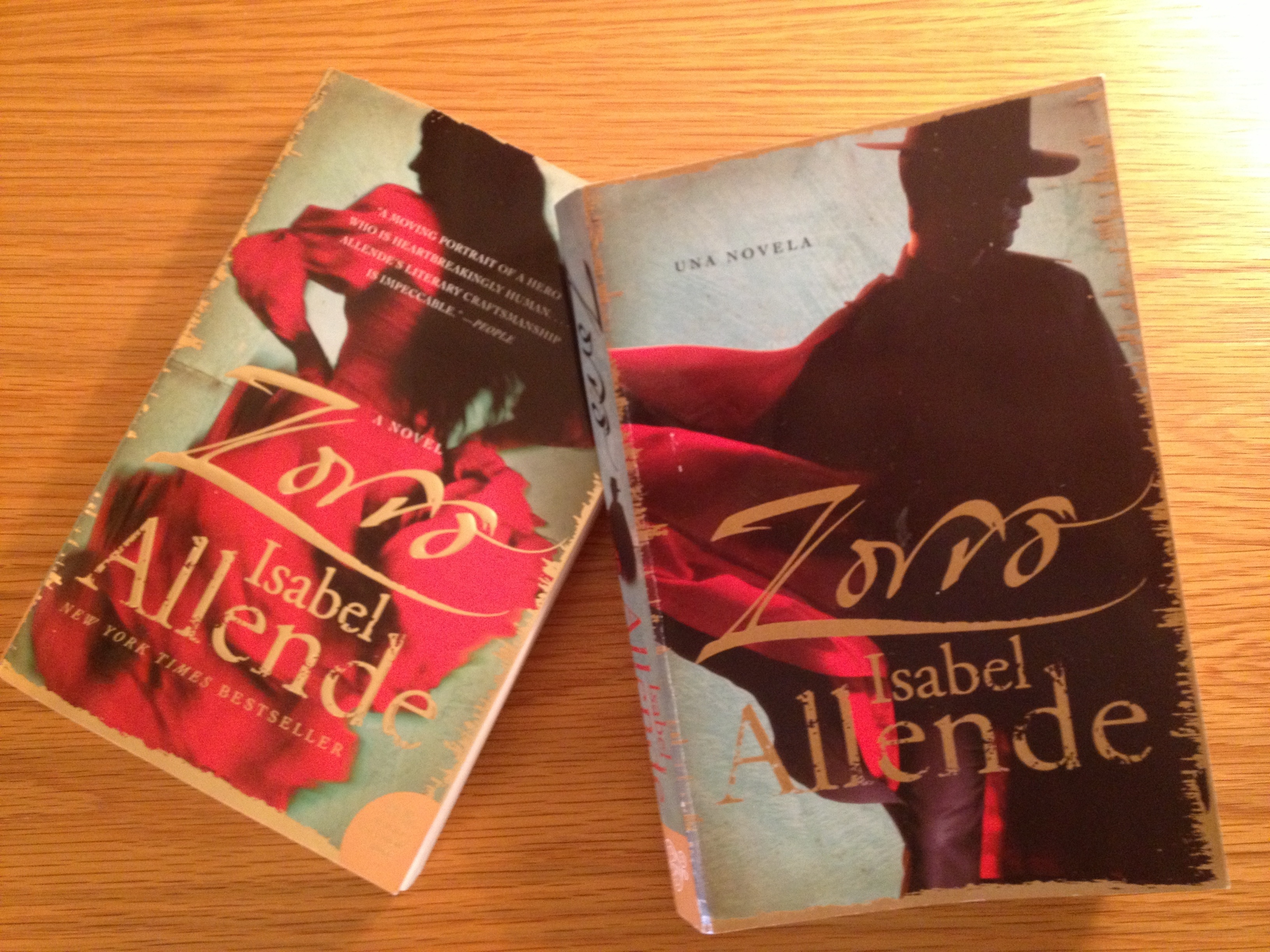Zorro: 1 (big) Thing to Learn Spanish
 A recent guest blog for us by Lizzie Davey made me realize that in addition to the many small things that help you learn a language, there is clearly one big thing that helps your new language: READING.
A recent guest blog for us by Lizzie Davey made me realize that in addition to the many small things that help you learn a language, there is clearly one big thing that helps your new language: READING.
As some may recall from earlier blogs, Spanish was a language I started to learn last year; first with our 36-lesson Spanish 1 course, then during our 2 month stay in Spain, reading newspapers, watching TV shows, talking to the locals in shops and restaurants.
And now, I continue to read Spanish articles online and sometimes even watch a soap on our local Spanish TV station.(A great app and Chrome extension is Lingua.ly, which not only lets you look up words you don't know, but also places them in a list you can later review and practice!)
Reading Zorro
A few months ago, my wife gave me two books for my birthday: the original Spanish version of Zorro by Isabel Allende and its English translation. (According to Wikipedia, Allende's book represents a prequel to the original Zorro story, Johnston McCulley's 1919 novella "The Curse of Capistrano.")
I have been reading two to three pages most nights and I am enjoying the book tremendously. Reading a novel is quite different from reading newspaper articles, which often deal with familiar topics. The language of news reports is also easier to comprehend than the literary and sometimes abstract language of a novel.
A handy Spanish-English dictionary would help me translate the many new words I encounter. However, having the excellent English translation of the text has several benefits: You start to understand the story much faster; you pick up on the Spanish idioms and expressions as well as their English equivalents; you often experience the "aha" effect that makes learning both fun and effective.
English First
When I started to read the Spanish version first, I quickly became discouraged. There were many words I did not know and I became lost in the events of the story.
But then, when I began reading the English translation, the history of Zorro's beginnings - which I certainly did not recall from the movies and which, I assume, Isabel Allende invented - became interesting and intriguing.
And, when I went back to the Spanish version, words and phrases became clear and obvious and became further proof of one of our gamesforlanguage key credos: Once you understand the context, you can more easily decipher sentences and structures.
For several chapters I continued with this approach: I read a paragraph or two first in English, then I switched to the Spanish version.
Spanish First
After several chapters, I experimented reading the Spanish version FIRST. Not surprisingly, I was already able to read much further along before starting to "lose it" and having to switch to the English version for a quick "context refresher."
As I continue to read about Diego de la Vega's early life - his childhood, his travel to Barcelona, and his life in Spain - his later life as "Zorro" starts to make sense. I discover, for example, the significance of the name "Zorro", meaning "fox" in English, as well as his reasons for wearing a mask!
The narrator tells us: "... era todavía un mozalbete de orejas salidas, ..." (he was still a stripling with protruding ears).
"... El problema de las orejas fue la razón por la cual se le ocurrió la idea de usar un máscara,..." (The problem of the ears was the inspiration for wearing a mask).
Isabel Allende was able to create an image of the young fictional Zorro in which is both plausible and fun to read!
A (Big) Language Tip
There are "Easy Readers" and "Dual Language Readers" that work quite well for many learners. But, if you have already mastered some of the basics of your new language, want to expand your vocabulary, and challenge yourself, get the foreign and English versions of books that interest you. Your new language will grow in leaps and bounds!
